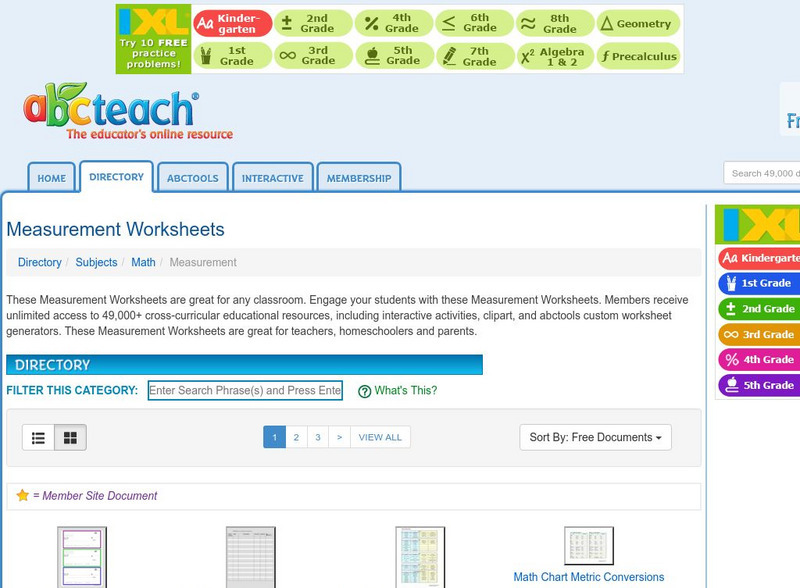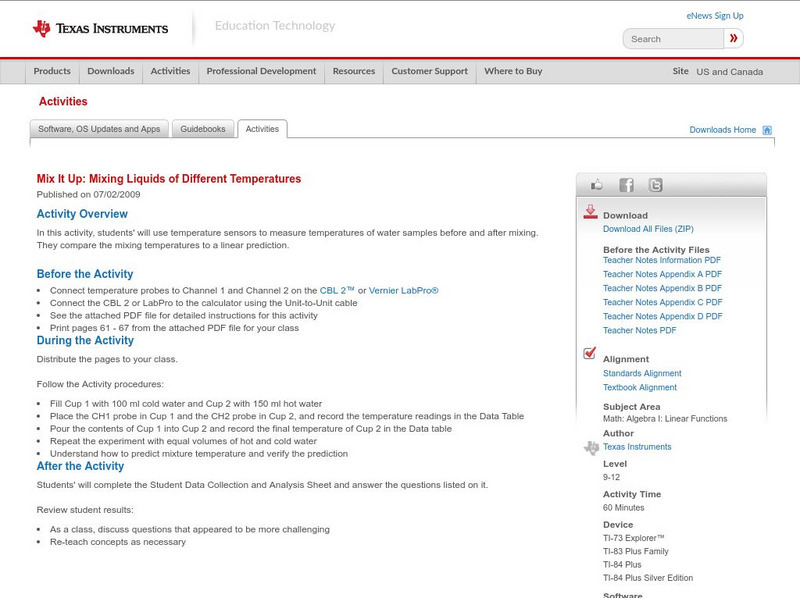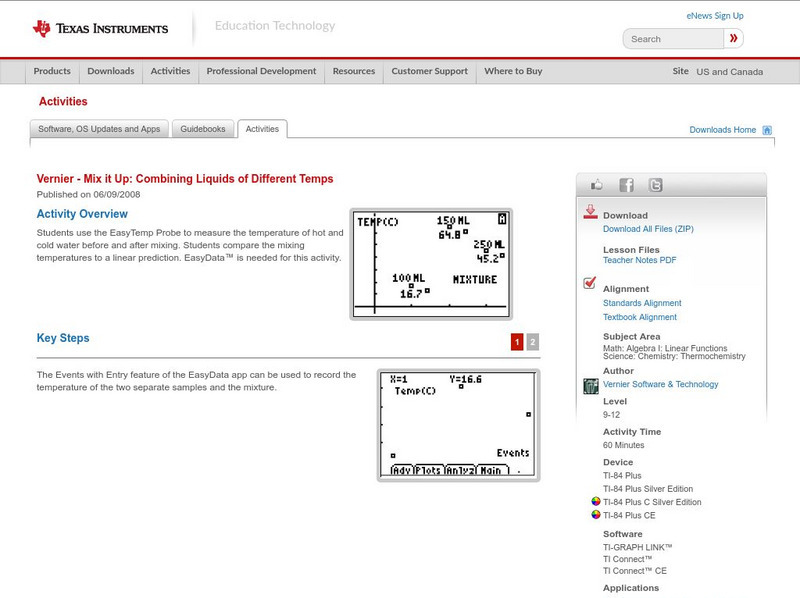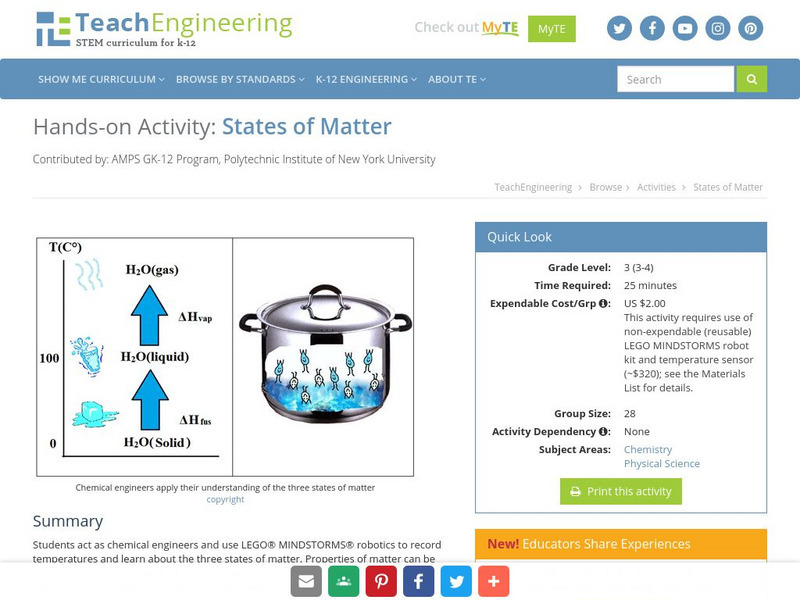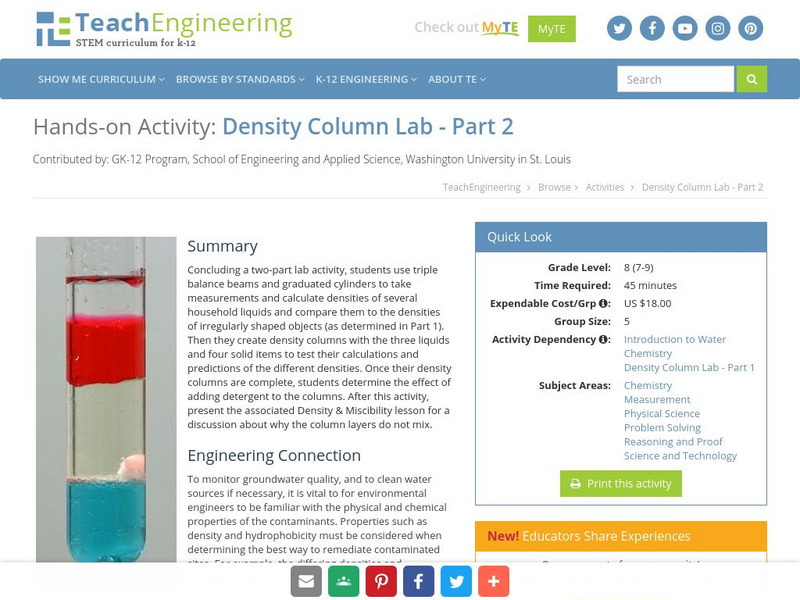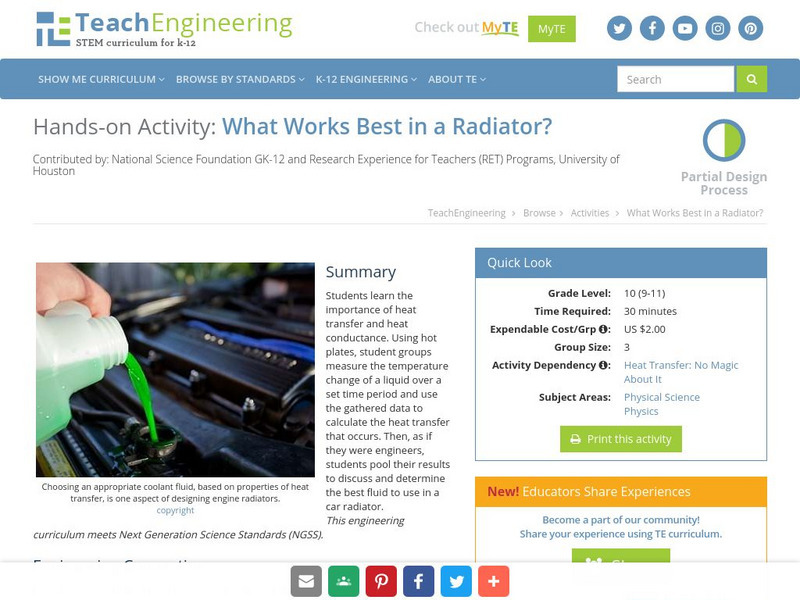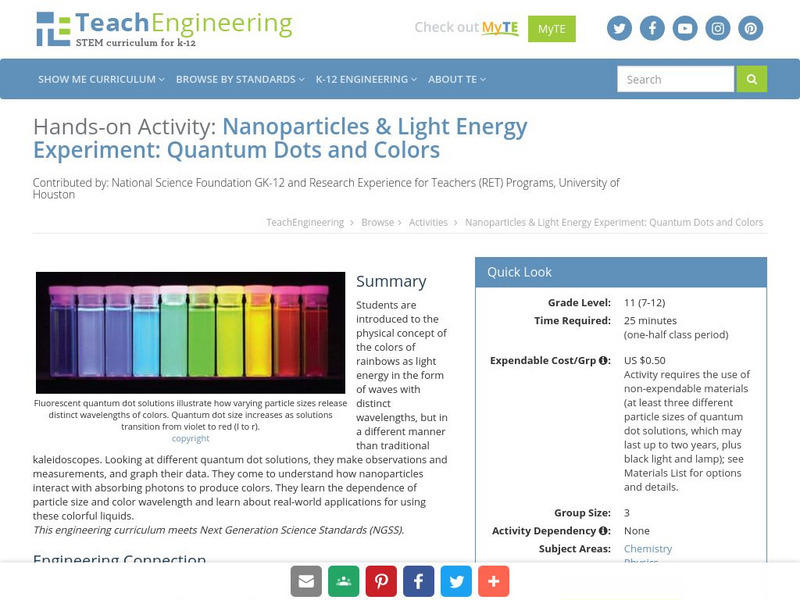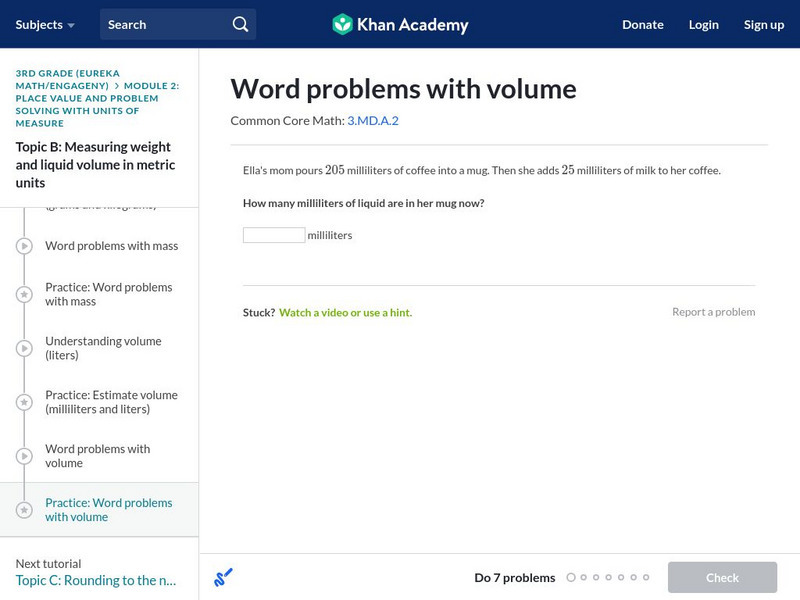Science Education Resource Center at Carleton College
Serc: Measuring Liquid Volume
In this lab, students will measure and combine colored liquids to receive the expected results. The intended outcome would be to take primary colored liquids, measure them and combine them to create a "rainbow" colored set of water in...
abcteach
Abcteach: Math: Measurement
[Free Registration/Login Required] Teachers will find a variety of worksheets, booklets, conversion charts, warm-up activities and more on measurements. There is even one activity that could be used in a French language class which...
Texas Instruments
Texas Instruments: Mix It Up: Mixing Liquids of Different Temperatures
In this activity, students' will use temperature sensors to measure temperatures of water samples before and after mixing. They compare the mixing temperatures to a linear prediction.
Texas Instruments
Texas Instruments: Electrolytes: Which Liquid Produces the Most Volts?
In this activity, students' will use a Voltage Sensor to measure the voltage produced by an electrolyte. They will understand that acids and bases are electrolytes and compare voltages of acids to the voltages of bases. Students' will...
Texas Instruments
Texas Instruments: Mix It Up: Combining Liquids of Different Temps
Students use the EasyTemp Probe to measure the temperature of hot and cold water before and after mixing. Students compare the mixing temperatures to a linear prediction. EasyData is needed for this activity.
TeachEngineering
Teach Engineering: Measuring Lava Flow
Students learn how volume, viscosity and slope are factors that affect the surface area that lava covers. Using clear transparency grids and liquid soap, students conduct experiments, make measurements and collect data. They also...
TeachEngineering
Teach Engineering: Measuring Viscosity
Students calculate the viscosity of various household fluids by measuring the amount of time it takes marble or steel balls to fall given distances through the liquids. They experience what viscosity means, and also practice using...
National Council of Teachers of Mathematics
Nctm: Figure This: Drip Drops
Figure out how much water you waste in a week in this exploration using your problem solving, measurement, and estimation skills. This activity is from the NCTM Math Challenges for Families series.
Science Education Resource Center at Carleton College
Serc: Mn Step: Study of Student Precision Using Volumetric Glassware
This activity is an exercise in using various lab equipment for measuring the volume of a liquid. Data is recorded on a spreadsheet and analyzed to see which tool offers the greatest precision.
PBS
Nova Online: How Many Pearls? A Weight & Volume Game
This interactive game has students apply skills in estimation, measurement, and basic addition using pearls. Students are asked to estimate the number of pearls in a treasure chest by making predictions and using number sense. The skills...
Wolfram Research
Wolfram Science World: United States System of Liquid and Dry Measures
Unlike the British Imperial system, the United states uses two different systems, one for liquid volumes and one for dry volumes. Confusingly, these two systems share the units of quart and pint, which have different values. This site...
TeachEngineering
Teach Engineering: States of Matter
Students act as chemical engineers and use LEGO MINDSTORMS NXT robotics to record temperatures and learn about the three states of matter. Properties of matter can be measured in various ways, including volume, mass, density and...
Math Is Fun
Math Is Fun: Introduction to Us Standard Units
Students learn how to measure things using US Standard Units. Liquids, mass, length, and temperature are explored. Practice problems are included.
Alabama Learning Exchange
Alex: Souper Scooper
This hands-on, inquiry based lesson plan is an extension of the AMSTI Science Module, Solids and Liquids. Students use nonstandard units to measure beans in a soup mix. Students predict how many beans will be in a scoop. Students group...
TeachEngineering
Teach Engineering: Make That Invisible! Refractive Index Matching
Students determine the refractive index of a liquid with a simple technique using a semi-circular hollow block. Then they predict the refractive index of a material (a Pyrex glass tube) by matching it with the known refractive index of a...
TeachEngineering
Teach Engineering: Density Column Lab Part 2
Concluding a two-part lab activity, students use triple balance beams and graduated cylinders to take measurements and calculate densities of several household liquids and compare them to the densities of irregularly shaped objects (as...
TeachEngineering
Teach Engineering: What Works Best in a Radiator?
Students learn the importance of heat transfer and heat conductance. Using hot plates, student groups measure the temperature change of a liquid over a set time period and use the gathered data to calculate the heat transfer that occurs....
TeachEngineering
Teach Engineering: Quantum Dots and Colors
Students are introduced to the physical concept of the colors of rainbows as light energy in the form of waves with distinct wavelengths, but in a different manner than traditional kaleidoscopes. Looking at different quantum dot...
TeachEngineering
Teach Engineering: Surface Tension
Surface tension accounts for many of the interesting properties we associate with water. By learning about surface tension and adhesive forces, students learn why liquid jets of water break into droplets rather than staying in a...
Curated OER
Educational Technology Clearinghouse: Clip Art Etc: Cyathus
A Greek and Roman liquid measure, containing one-twelfth of the sextarius, or .0825 of a pint English. The form of the cyathus used at banquets was that of a small ladle, by means of which the wine was conveyed into the drinking-cups...
Khan Academy
Khan Academy: Arithmetic Word Problems With Volume
In this exercise, students practice arithmetic word problems with volume. Students receive immediate feedback and have the opportunity to get hints and try questions repeatedly. CCSS.Math.Content.3.MD.A.2 Measure and estimate liquid...
Curated OER
Friction Is a Force That Moves in an Opposite Direction to Movement.
This resource provides a brief overview of friction. Its' affects on solids, liquids and gases is described with diagrams. An explanation of how friction is measured is included in the discussion. An online quiz can be used to check your...
Curated OER
Science Kids: Science Images: Pipette
This picture show two pipettes, used in laboratories to measure or transfer small amounts of liquid.

